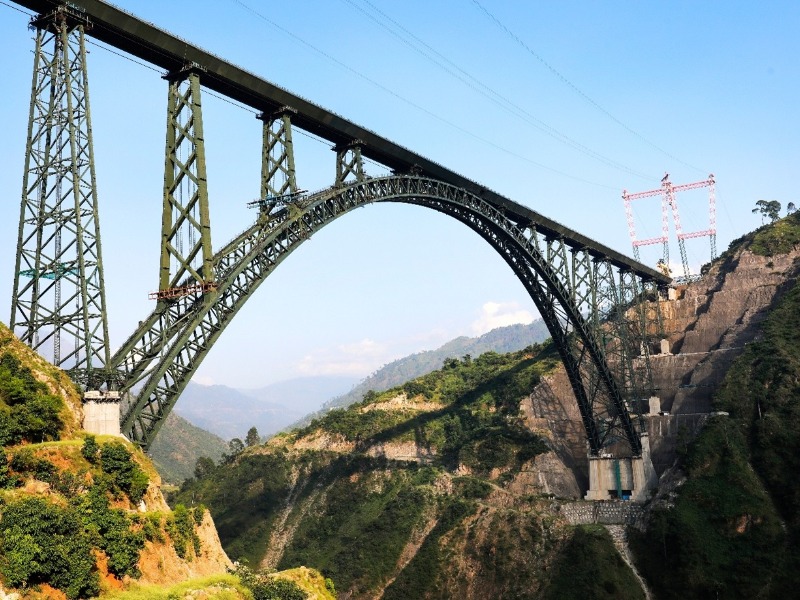India is home to some of the most breathtaking infrastructure in the world, and nowhere is this more evident than in the Union Territory of Jammu & Kashmir. Two standout engineering marvels—Chenab Rail Bridge and Anji Khad Bridge—are rewriting the history of rail transportation in the region. While one holds the title of the world’s highest railway bridge, the other is India’s first cable-stayed railway bridge. In this blog, we’ll compare both, uncover mind-blowing facts, and celebrate their contribution to India’s rail evolution.
Table of Contents
Chenab Rail Bridge vs Anji Khad Bridge – Quick Comparison
| Feature | Chenab Rail Bridge | Anji Khad Bridge |
| Type | Arch Bridge (Steel Arch) | Cable-Stayed Bridge |
| Height | 359 meters (World’s Highest) | 331 meters |
| Main Span | 467 meters | 290 meters |
| Year of Completion | 2022 | 2024 (expected) |
| Material Used | Steel and Concrete | Cable, RCC, Steel |
| Location | Over Chenab River, Reasi, J&K | Over Anji Khad River, Reasi, J&K |
| Purpose | Part of USBRL Project | Connects Katra-Banihal section |
| Notable Fact | Taller than Eiffel Tower | India’s First Cable-Stayed Railway Bridge |

10 Mind-Blowing Facts About Chenab & Anji Khad Bridges
- Chenab Rail Bridge is taller than the Eiffel Tower (324 m vs. 359 m).
- Anji Khad is India’s first cable-stayed railway bridge.
- Wind tunnel tests for Chenab were conducted in Denmark.
- Anji Khad is designed to withstand winds over 213 km/h.
- Both bridges are located in seismic zone IV-V.
- Aerial cable cars were used during Anji Khad’s construction.
- Chenab Bridge can withstand blasts, built with military considerations.
- Anji Khad has 96 cables anchored deep in bedrock.
- Both are part of the strategic Udhampur-Srinagar-Baramulla Rail Link (USBRL).
- Engineers used drones and 3D terrain modeling for both projects.
Engineering Challenges Overcome
- Rugged and mountainous terrain with limited access.
- Fragile Himalayan geology with frequent landslides.
- Harsh winters and sub-zero construction conditions.
- Earthquake-prone zone requiring advanced seismic engineering.

Symbol of Modern India and Engineering Excellence
Together, the Chenab Rail Bridge and Anji Khad Bridge not only serve as logistical lifelines but also represent India’s technological advancements in civil engineering. They symbolize resilience, strategic growth, and a commitment to uniting every part of the nation—geographically and economically.
Useful Resources and Further Reading
Conclusion
From steel arches to soaring cables, both the Chenab Rail Bridge and Anji Khad Bridge redefine the limits of what’s possible in infrastructure. As they connect remote corners of Jammu & Kashmir to the rest of India, these structures aren’t just physical links—they’re powerful symbols of national pride and progress.

